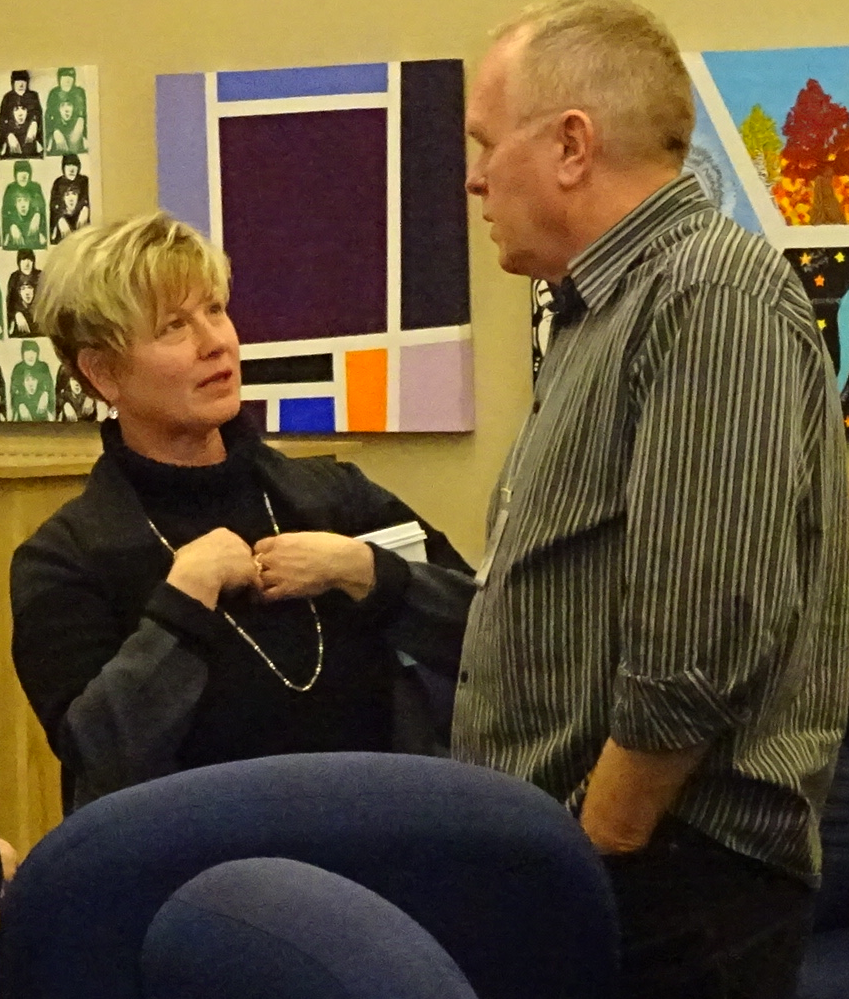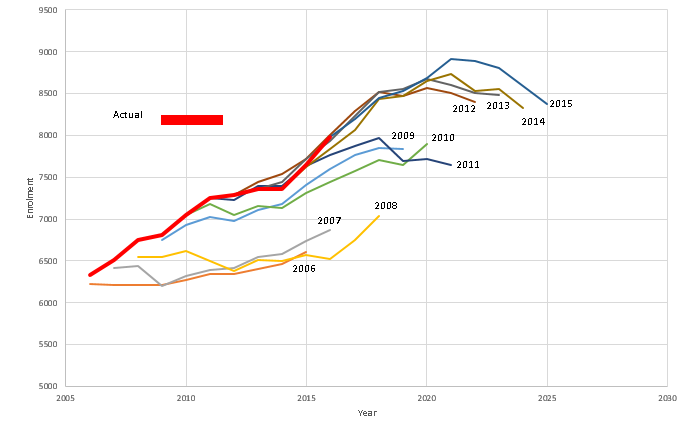May 15th, 2017
BURLINGTON. ON
Steve Armstrong was one of the 14 members of the Burlington community that sat on the PAR – tasked with being the conduit between the Board of education and the community.
It is safe to say that every member of the PARC believes the process was badly flawed and resulted in communities fighting with each other rather than working together to find a solution that worked for everyone.

PARC committee needed some time to understand the rules they had to work within. They had begun to realize that they were in an impossible situation yet began to come to the conclusion that not closing any schools was perhaps the best option for the immediate future.
The PARC leadership was not able to find a route to a solution; the PARC members did begin to coalesce around the option that called for no school closures. What the PARC did do was reject the original recommendation which was to close Central high school and Pearson high school.
The second recommendation recommended closing Bateman high school and Pearson high school; that led to a much closer look at just what Bateman had going for it – a lot more than many people realized.
That realization and the better late than never arousal of the Bateman parents brought some exceptionally valid information the public didn’t have before. We will have more detail on just what Bateman does have going for it; as much if not more than Central.
Steve Armstrong, a Pearson parent said in his delegation that the Board of Education’s utilization (that portion of the capacity of a school that is being used) sits at 75% and, based on the Board’s projections, will hit 80% in 2020.
That 75% is a city wide number – it includes all the schools – some of which are at the Board policy utilization level of 90% while others are at significantly below. Pearson is one of the schools significantly below. Armstrong believes that “If these sorts of numbers (75%) were being seen at each of the schools we wouldn’t be undergoing this process.”
Armstrong prepared a series of graphs, one of which showed that Burlington’s overall actual enrollment bottomed out in 2014, and is presently on the rise. He also shows yearly Long Term Accommodation (LTAP) for as far back as 2006. The curve labeled as 2010 represents the 2010-2011 LTAP data.

This graph shows what the LTAP boundaries were for each of the years – the actual number is shown in red and indicates that enrollment bottomed out in 2014
“Just focusing on the pattern associated with 2020 enrollments we can see that from the 2010 projections up to the most recent data provided to the PAR Committee there has been a strong increase in the expected numbers. Over 700 students to be exact, and 2020 isn’t very far away.”
Armstrong notes that this pattern is also seen in the Oakville data, but is a little more “bursty”, and makes bigger jumps when it moves. Not surprisingly the accuracy of the projections goes down, in both municipalities, the further out one looks.”
“The Region is growing, the City is growing, high school enrollment is growing, and the pattern has been that the projection errors tend to underestimate the actual numbers. This isn’t to surprising as the Board recognizes the planned housing growth at a different point than the City does.

Andrea Taylor, Principal at M.M. Robinson in conversation with Steve Armstrong during a PARC meeting.
Given the known near term growth, and the lower confidence in the projections beyond 5 years, extreme caution regarding closing schools is merited. Especially if it involves selling real estate assets in return for short term cash benefit.”
“High over utilization (crowding) creates problems, and low enrollment numbers will reduce some opportunities for studnets. Both situations alter the student experience, and we have these conditions present in two close proximity schools located in north Burlington – Hayden and Pearson. As the image below indicates they show a large overlap in “walkability” zones.”
The most recent projections indicate that if nothing changes Hayden will grow in size and be 600+ students over capacity by 2021. And there is no room for additional portables or a permanent addition on that site.

The symbol indicating the school aligns with the boundary area. Armstrong identified just three relatively small areas where a student would not be expected to walk to school from.
Option 19 had proposed to move the French Immersion (FI) program to MM Robinson as a way to deal with this looming issue. The Board had also listed in its Options the idea of capping enrollment, with extra students being redirected to an overflow school.
The PAR Committee also briefly discussed boundary changes, but ultimately the present recommendation stays with moving FI, and monitoring the situation going forward.
Armstrong has great concern and takes “exception to the simple notion of “monitoring”,.
Armstrong argues that the “enrollment numbers for Lester B Pearson as depicted in this graph “we can visualize three sets of data. The upper most curve represents the projected enrollment prior to a boundary change associated with the opening of Hayden. The boundary change purposely reduced the expected enrollment to just below 600 students. Apparently smaller enrollments where Ok back then! The actual enrollment went off the plan quickly, and significantly. Presently that school is sitting 30% below its planned student body, and indeed those 392 students are witnessing the problems of too little enrollment.”
 Armstrong doesn’t have much faith in the Board’s plan to monitor. “If monitoring simply means standing by and watching then that is unacceptable. If 30 % off target isn’t enough to trigger action what is? The Board needs to put a stronger set of actions around tracking and managing, and the Trustees needs to press for frequent reporting back to them” he said.
Armstrong doesn’t have much faith in the Board’s plan to monitor. “If monitoring simply means standing by and watching then that is unacceptable. If 30 % off target isn’t enough to trigger action what is? The Board needs to put a stronger set of actions around tracking and managing, and the Trustees needs to press for frequent reporting back to them” he said.
Armstrong wil tell you that “Hayden definitely has a “vibe” to it, and it’s more than just being a new building. “When I toured the school as a PARC member I couldn’t help but feel that Burlington needs more of this. In reality, feel probably has little to do with the age of the walls.”
Armstrong likes the idea of conjoining Hayden and Pearson as a way of combining the best of both schools. “If Hayden’s Principal was to also oversee Pearson, similar to what happens with some elementary schools, would this not help ensure success? Since the goal is that some of the students presently going to, or about to start at Hayden, would be instead attending Pearson, why not bring some of the teachers over as well he asks.
Pearson has been a vibrant smaller school in the past, and not everyone is seeking out everything that a large school has to offer. Armstrong points out that currently 25% of Pearson’s students do so through optional attendance. A similar percentage also attend Bateman’s English stream program through optional attendance. Apparently there is value in having such environments available both north and south of the QEW.
With a proposal like this both student bodies expand their programming options, in an environment most suited to their preferences.
“The current set of recommendations would move the city’s overall utilization from the present 80% trajectory to 108%. Based on the historical inaccuracies of the projections beyond the 5 year mark this plan greatly increasing the risks of requiring capital intensive construction in the future.
“Hayden’s projections involve it running at 150% of capacity by 2021. Redirecting FI to MM Robinson to relieve overcrowding is too critical to simply leave to “monitoring” the progress.
“Closing Pearson removes close proximity capacity from the North, eliminates an option for smaller school attendance, and takes what by 2020 will be a 88% utilization up to 111% overall for the remaining 2 schools.”
“Change isn’t always easy” acknowledged Armstrong. “Perhaps starting with a smaller project, that would develop better community based problem solving, is in order.”

Closing no schools was always an option – it just took the PARC members some time to realize it might be the best one. 7 dots

The original option to close Central and Pearson was interesting to those who were not representing either of the schools. 9 dots

This was the same as option 19 with some variation on boundary changes and shifts in the program offerings. 9 dots
Armstrong has come to the conclusion that Pearson is necessary to give Hayden some breathing room and to continue the community based approach to problem solving. He was a strong advocate for retaining access to a smaller school in the North.
The PAR committee members were asked to rank the options that were before them. Each of the 14 PRAC members were given two dots to put on which ever option they favoured. The objective was to begin to whittle down the 40 plus options that were on the table. The results made it immediately clear that there wasn’t going to be anything near the consensus the Board would have liked to see. It also meant that the trustees had a very hard job ahead of them.
After his three months of work on the PARC, Armstrong feels the trustees need to vote for the “close none of the schools option” and allow time for the Board, with significant involvement from the community, to fully study the issues and finally get it right.
Like many in the community, Armstrong believes that Hayden should not have been built – but it exists and parents are going to have to live with that decision. That is is a fine school today, even though it is over crowded, should not blur the issues about what is done with the other six high schools.






















Unfortunately, I agree with those who say these closures are not about the needs of our children but rather about money. Milton is said to be the fastest growing community in Canada and will therefore be looking to build new schools in the near future.
Developers will be lining up to pay many millions for the Bateman property as part of the plan for Mobility Hubs around the Go stations.